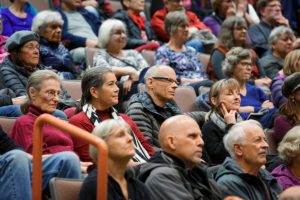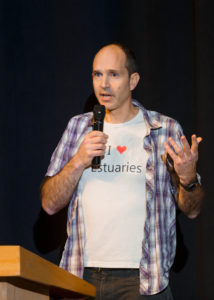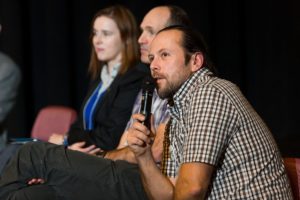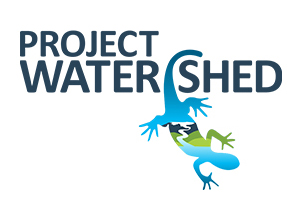[av_textblock size=” font_color=” color=” admin_preview_bg=”]
 Over 120 people attended our recent “Unpave Paradise” event at North Island College to learn about the exciting partnership that is underway to restore the old Field Sawmill site on the Courtenay River to natural habitat. The night showcased a range of speakers on the site’s past and plans for future, and highlighted the project’s many benefits and historic significance to the Comox Valley.
Over 120 people attended our recent “Unpave Paradise” event at North Island College to learn about the exciting partnership that is underway to restore the old Field Sawmill site on the Courtenay River to natural habitat. The night showcased a range of speakers on the site’s past and plans for future, and highlighted the project’s many benefits and historic significance to the Comox Valley.
The site has been given the name Kus-kus-sum by the K’ómoks First Nation in recognition of the historic village site that was located in the vicinity. The K’ómoks First Nation and City of Courtenay are key partners in this initiative. The project is seeking $6.5M to buy the site, remove 3.5 hectares of pavement and “re-wild” a degraded section of the river, with benefits ranging from enhanced salmon habitat to potential flood mitigation and riverside recreation improvements. View the Powerpoint from that evening!
K’ómoks Elder Barb Mitchell welcomed attendees to the Stan Hagen Theatre and opened the event by speaking about the significance of the K’ómoks Estuary in this “land of plenty”.
Historian Lawrence Burns, who has resided in Courtenay since 1929 and is an expert of local history, took audiences on a historical journey down the Courtenay River. See more historical photos.
 Scott Wallace, PhD, author and marine conservation biologist from the David Suzuki Foundation, talked about the importance of estuaries and their many values to our regional and global communities. Most residents were unaware that our K’ómoks Estuary is one-of-a-kind and supports globally significant migratory bird populations, among many features that warrant its stewardship.
Scott Wallace, PhD, author and marine conservation biologist from the David Suzuki Foundation, talked about the importance of estuaries and their many values to our regional and global communities. Most residents were unaware that our K’ómoks Estuary is one-of-a-kind and supports globally significant migratory bird populations, among many features that warrant its stewardship.
Tim Ennis, project manager of Campbell River’s recent estuary restoration project and the Kus-kus-sum restoration project, explored how our neighbouring community re-wilded several industrial sawmill sites in their estuary while also building community pride and investing in local assets and values. Ennis illustrated how the collaboration in the Campbell River estuary is a template for success with the Kus-kus-sum project.
Jennifer Sutherst, Project Watershed biologist, reviewed the preliminary restoration and re-planting plans for Kus-kus-sum. People can “sponsor” various components of this habitat, from salt marsh to trees and shrubs, on Project Watershed’s website and www.kuskussum.ca. She also detailed the process Interfor went through to remediate contaminants on the site.
Many audience members were still curious about contaminated soils. Project Watershed said that the remediation  process should have left little to no contaminated soil, but if it is discovered, they have planned contingency funds to cover remediation.
process should have left little to no contaminated soil, but if it is discovered, they have planned contingency funds to cover remediation.
Dan Bowen, Project Watershed Technical Director, emphasized that in the unlikely case that contamination is discovered, “We will be glad to have the opportunity to remove and remediate it, because the aim of this project is to make our Valley a healthier place.”
A surprise announcement during the event also heralded a new milestone of fundraising accomplishment in the multi-year initiative. An anonymous “Estuary Angel” came forward to pledge support and will match all funds donated by the local community between now and the end of next year, up to a total of $150K. Since the announcement, over $6,000 has been raised and matched by the Estuary Angel. As of December 11th, Project Watershed has raised $95K towards their first target of $100K by Dec. 20, 2017.
With $5,000 or so left to raise, Kus-kus-sum supporters are encouraging people to make a holiday donation to help reach their goal.
“Consider Christmas shopping with Project Watershed to help create a lasting legacy in the heart of our community,” says Kathy Haigh, Project Watershed Fundraising Director. “We have recycled tote bags, chocolate bars, local art cards and alternative gift cards – where you make a donation in someone else’s name and receive an art card and certificate as their gift. Imagine what it will be like in the future, looking at a restored Kus-kus-sum and knowing you helped plant that tree or make it possible for that eagle or heron to also call this place home.”
[/av_textblock]
[av_one_half first min_height=” vertical_alignment=” space=” custom_margin=” margin=’0px’ padding=’0px’ border=” border_color=” radius=’0px’ background_color=” src=” background_position=’top left’ background_repeat=’no-repeat’ animation=” mobile_display=”]
[av_button label=’Donate or Volunteer’ link=’page,4510′ link_target=” size=’x-large’ position=’center’ icon_select=’no’ icon=’ue800′ font=’entypo-fontello’ color=’green’ custom_bg=’#444444′ custom_font=’#ffffff’ admin_preview_bg=”]
[/av_one_half]
[av_one_half min_height=” vertical_alignment=” space=” custom_margin=” margin=’0px’ padding=’0px’ border=” border_color=” radius=’0px’ background_color=” src=” background_position=’top left’ background_repeat=’no-repeat’ animation=” mobile_display=”]
[av_button label=’Learn More’ link=’page,5752′ link_target=” size=’x-large’ position=’center’ icon_select=’no’ icon=’ue800′ font=’entypo-fontello’ color=’theme-color’ custom_bg=’#444444′ custom_font=’#ffffff’ admin_preview_bg=”]
[/av_one_half]

